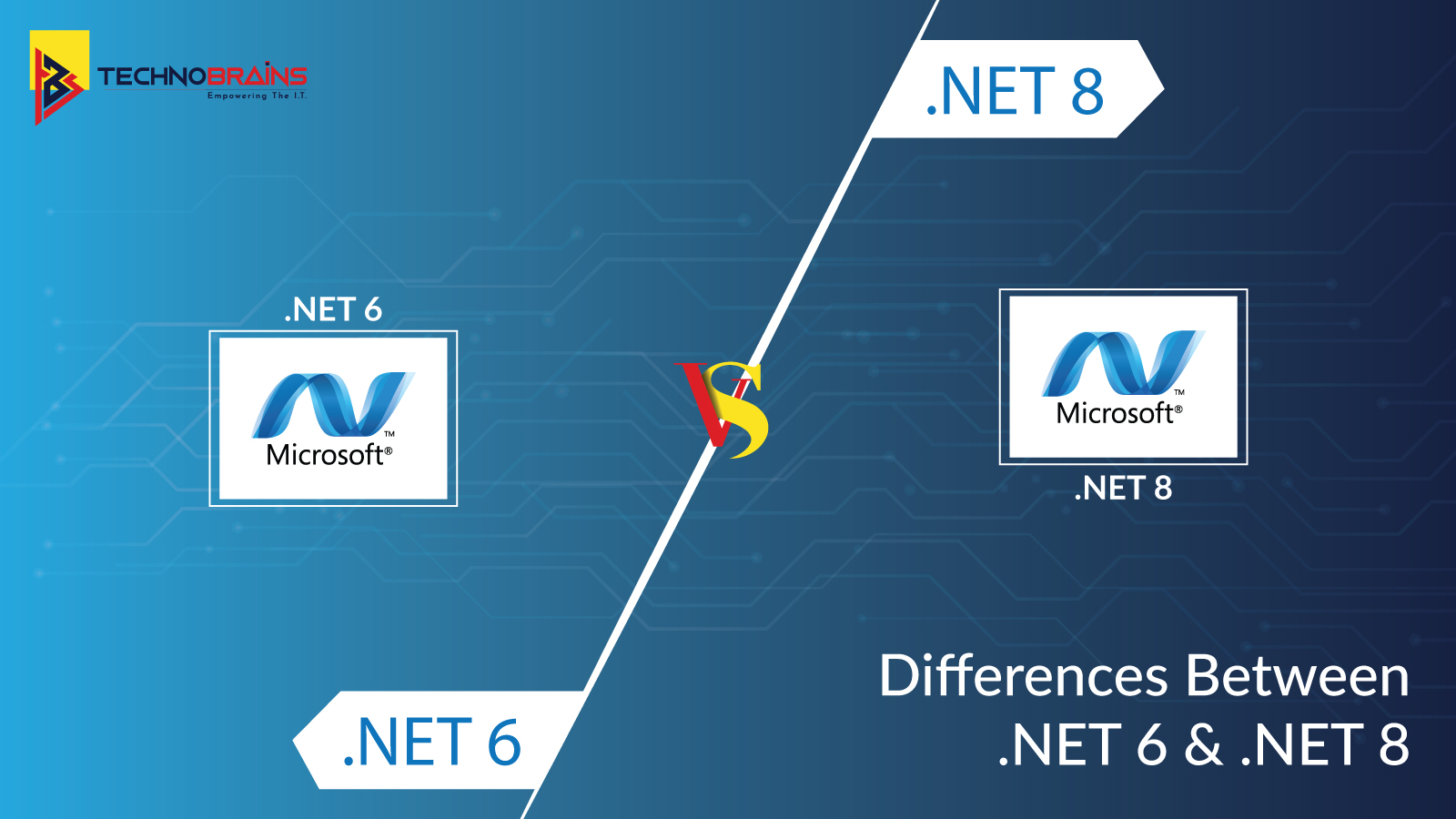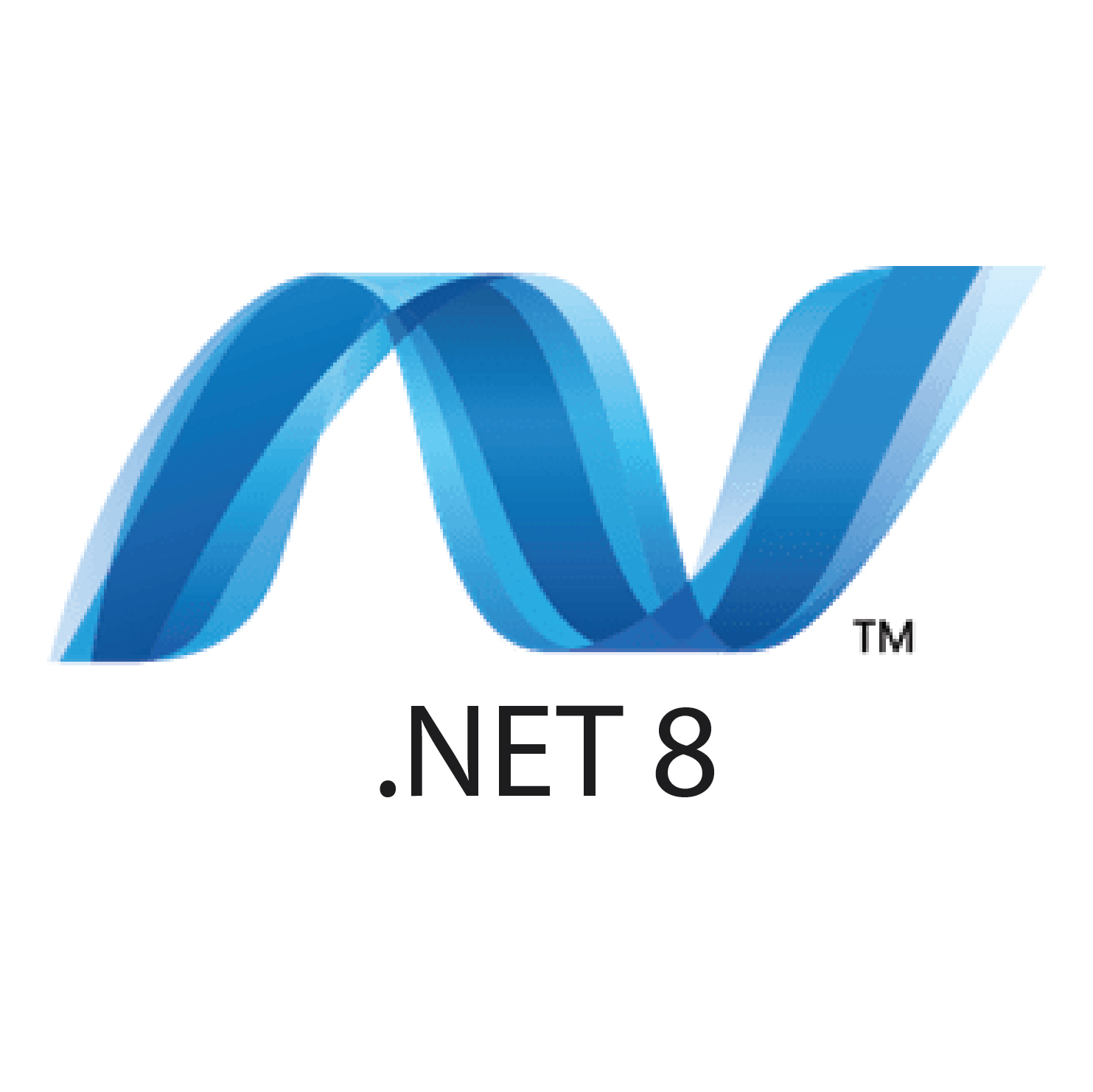In the contemporary software development landscape of today, businesses constantly strive to stay ahead of their competition by formulating and bringing cutting-edge and top-notch software solutions to their audiences. This allows them to gain a competitive edge, bolstering their reputation and securing a steady road to continual success. One such technological development framework that makes achieving this ambition simple and straightforward is Microsoft’s .NET framework.
With over two decades of innovation and a focus on revolutionizing software development, .NET has advanced in unprecedented ways, with every new .NET edition introducing ground-breaking features and functions. .NET 6, released on November 8, 2021, and .NET 8, released on November 14, 2023, are both additions to .NET that introduced a multitude of new features and improvements. Both versions are significant releases that expand upon the already solid cornerstone of the .NET framework.
This blog’s purpose is to explore the key differences between .NET 6 and .NET 8 and provide a better insight into the two releases.
Comparison Between .NET 6 and .NET 8
Over the past 20 years, the .NET framework has evolved considerably and acquired widespread adoption, giving users the medium they need to develop software solutions to cater to their individual requirements. Microsoft has been intent on enhancing this framework, which is evident in the number of features, tools, and enhancements this tool has garnered since its inception.
When comparing .NET 6 and .NET 8, the core differences between the two boil down to what each version offers for business. .NET 6 primarily focused on improving overall performance and runtime, enabling .NET applications to be faster and more resource-efficient, and .NET 8 has prioritized developer experience, allowing them to write clear, more concise code. Ultimately, if you’re looking for performance and stability, .NET 6 might be a better choice. But for newest features and enhancements, choose .NET 8 over .NET 6.
Understanding the Rudimentary Differences between .NET 6 and .NET 8
Both versions of the .NET framework serve as platforms to effectively meet the particular needs of businesses, regardless of the type and scale of the project. Whether the project involves building mission-critical, enterprise-grade software solutions or simple, result-oriented applications, .NET 6 and .NET 8 introduce a slew of new features and functionalities to significantly streamline development and enhance the developer experience. Deciding to migrate to either of the two versions is heavily dependent on what the version in question has to offer, its features, project-specific requirements, and other preferences.
Let’s take a look at the core differences between the two versions and gain a quick overview of the features of .NET 6 and .NET 8.
| Features/Aspects | .NET 6 | .NET 8 |
| Release Version | LTS (Long Term Support) | LTS (Long Term Support) |
| Language Improvements | Introduced pattern-matching enhancements, record types, file scoped namespaces, and eliminated the need for some of the boilerplate code. Introduced newer language versions of C# 10, F# 6, and Visual Basic | Significant changes to existing pattern-matching, primary constructors, collection initializers, improved support for generics, and new features in C# |
| New Additions/Upgrades | Hot Reload, HTTP/3, SDK Workloads, and Minimal APIs to streamline web API development, among other factors | Introduced SHA-3, a newer and more robust hashing algorithm for better security, time abstraction, and support for Vector512 and AVX-512. Advancements to Blazor and its existing capabilities |
| Performance | Significant performance gains in file I/O, JIT compilation, garbage collection, and string operations. Discouraged use of blocking APIs in favor of asynchronous alternatives | Enhanced Native AOT compilation for faster startup times, improved code generation with vectorization and inlining, generational garbage collection for better memory efficiency, and optimized ASP.NET Core and .NET MAUI performance |
| Observability | Reliant on third-party tools like OpenTelemetry for observability | Includes in-built tools and features to evaluate observability |
| Core Focus | Focused on .NET platform unification and introducing enhancements and features to boost overall performance | .NET 8 prioritizes increasing developer efficiency and expanding overall framework capabilities |
Read also, ASP.NET Framework: Building Next-Level Of Web Applications
A Closer Look at the Differences Between .NET 6 and .NET 8
We have covered the essential differences between .NET 6 and .NET 8. Next, let us examine the primary distinctions between the two versions in more detail.
1. Language and Feature Enhancements
.NET 6 and .NET 8, both versions of this efficient and robust framework, introduced new augmentations to what developers could accomplish with the programming language landscape. .NET 6 introduced pattern-matching enhancements, hot reload, file-scoped namespaces, and other powerful features that served to bring developers a new level of efficiency and productivity.
Correspondingly, the most recent .NET addition has brought about features like record types, top-level statements, and implicit null checks and improved upon existing features like pattern-matching and static analysis. Both versions eliminated the need for boilerplate code and simplified complex tasks, resulting in faster development cycles, enhancing the developer experience, and allowing businesses to deliver applications to the market on time.
2. Differences in Performance
Microsoft, with each .NET release, has placed a high priority on performance enhancements. The same has been the case with both .NET 6 and .NET 8. With its release, .NET 6 introduced features like enhanced Just-In-Time (JIT) compilation and improved garbage collection, leading to significant reductions in execution times and memory usage, making applications noticeably faster and more efficient.
.NET 8, conversely, has optimized and tuned the runtime for specific workloads, facilitating applications to utilize available resources more productively. It results in performance improvements, allowing businesses to build applications that run faster, are responsive, and deliver a better user experience.
3. Improvements to Existing Tools & Libraries
Both .NET 6 and .NET 8 encompass ecosystems with libraries, tools, and frameworks to streamline development and provide businesses access to a rich pool of resources. With each new release, Microsoft has emphasized improvements to the ecosystem’s existing tools and libraries. With .NET 6, changes were made to the ASP.NET Core with optimizations to JSON deserialization, support for HTTP/2, and minimal APIs to streamline web development.
The release of .NET 8 introduced new features and expanded upon existing ones. This included integrated support for OpenTelemetry, significant advancements to Blazor, extended support for new hardware intrinsics, and enhanced diagnostics, among other factors.
Both versions include exponential improvements to the preceding capabilities, bringing a new level of efficacy. Switching to either of the versions will allow them to build potent, top-tier software solutions and cater to the shifting consumer demands in today’s digital landscape.
Which Version Should You Choose for Your Project: .NET 6 or .NET 8?
Deciding between .NET 6 and .NET 8 for your project is a decision that should not be made hastily but rather with careful consideration. It involves evaluating and considering many factors relevant to your project, including technical requirements, long-term goals, and individual requirements. In the decision-making process, you must contemplate various aspects, such as performance enhancements, language features, and ecosystem support. Considering the existing codebase and what efforts will be involved in upgrading are also crucial facets required for informed decision-making.
In this context, aligning with and enlisting the expert assistance of experienced .NET developers or consultants is highly advised. It will facilitate your making a well-informed decision after considering all relevant factors to ensure the maximum benefits of the chosen framework version.
Read also, Top Trends in .NET Development for 2023 and Beyond
How to Smoothly Migrate to .NET 6 or .NET 8?
Migration to .NET 6 or .NET 8, like any process, requires a well-planned strategy. Before moving ahead, assess your existing codebases, application architecture, and compatibility requirements to identify any potential challenges. It aids in a hassle-free migration.
Many resources and tools, such as automated code analyzers and migration guides, help ensure a smooth transition to the preferred .NET version. Every step of the migration process should entail thorough testing and validation to ensure a seamless and error-free transition to the desired version without affecting business operations.
Conclusion
Both .NET 6 and .NET 8 are noteworthy releases of the .NET framework that offer a host of features, improvements, and performance enhancements. The decision between the two versions for your development goals hinges on your unique business requirements and preferences in development. Consequently, before switching to either version, it is critical to thoroughly validate each factor to ensure that the selected framework resonates with your ideals and future aspirations. This approach increases your chances of long-term success and prosperity, driving business growth.








